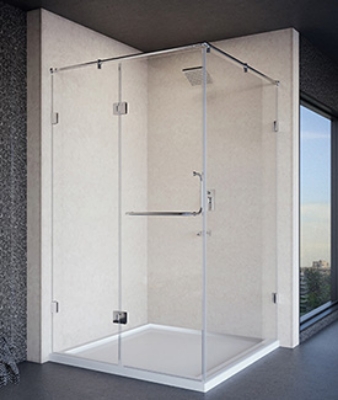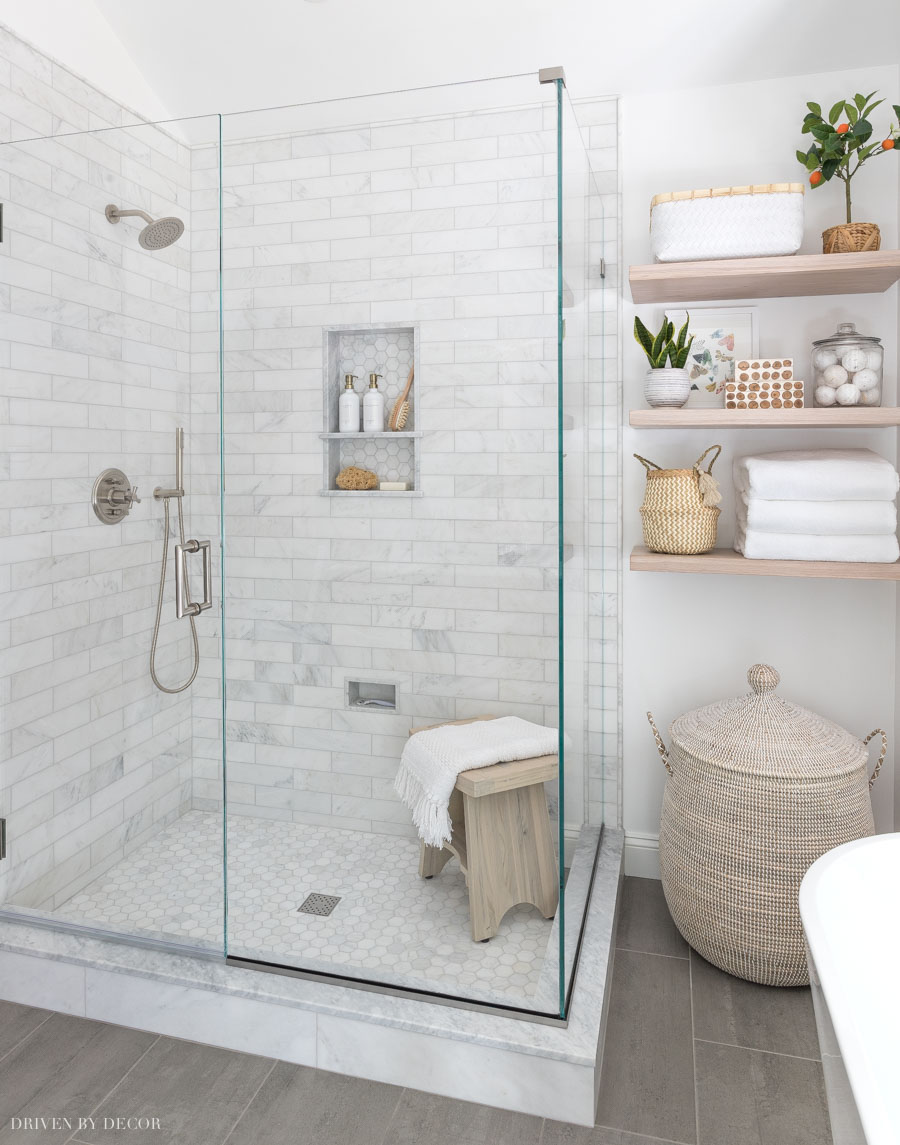What are your ideas regarding How to Install a Direct-to-Stud Shower Enclosure?

A successful shower installation requires careful preparation as well as a great deal of job. In most cases, you will need to do 3 sorts of jobs: mounting wall surfaces, installing the plumbing, and finishing walls.
Different Types of Shower Units
- Push-on Mixer: The hose and spray parts of the push-on mixer shower unit can be attached to the bathroom faucet based on your need, and also the water temperature level can be readjusted using the faucets. Push-on mixers are cheap and also exceptionally straightforward to set up. Nevertheless, although the tube link is basic, it is quickly removed. Additionally, it is inconvenient to readjust the temperature level.
- Bath/Shower Mixer: The pipe as well as spray of this type of shower are incorporated with a bath mixer faucet, as well as the temperature can be changed through the bath faucets. It is a really cheap alternative as well as no extra plumbing is involved. Nonetheless, the bath/shower mixers likewise experience troublesome temperature control options.
- Guidebook Mixer: The pipe and spray of a hand-operated mixer shower system are a part of the wall surface system and the hot and cold water products are linked to a solitary shutoff The temperature and also pressure of the water are regulated with either one or a variety of handles (in a lot more expensive showers). Although temperature level control is much easier in hand-operated mixer types, they are extra costly than the formerly pointed out mixers. They also need extra plumbing of hot and cold water supply pipelines.
- Thermostatic Mixer: The tube as well as spray of this shower type are a part of the wall device and the cold and hot water supplies are attached to a single shutoff here as well. It is full with a built-in stabiliser to self-adjust the water temperature level as well as to prevent it from coming to be also hot. Among the most significant benefits of a thermostatic mixer shower type consists of convenient temperature control. Nevertheless, it is one of the most expensive of the various mixer alternatives.
- Power Shower: A power shower is a single system having a powerful electric pump that can altering both the water pressure and also temperature. This kind of shower can be fitted if there is water from a cold water cistern as well as a warm water cyndrical tube. A power shower makes the adjustment of both pressure and also temperature level simple. On the other hand, it disagrees for water heated directly by the shower or where the water is supplied by a mix central heating boiler under keys stress.
- Electric Shower: An electric shower is plumbed into a mains cold water supply and also it warms the water electrically. It is essential to keep in mind that for this shower kind to be mounted, the keys pressure needs to be a minimum of 0.7 kg/sq cm (10lb/sq in). The system permits the temperature level and pressure to be adjusted through a knob. Designs with temperature level stabilisers are much better as they continue to be untouched by various other faucets elsewhere in use within the home. A major disadvantage of electric showers is that the control knob only allows for the option of high temperatures at less pressure, or lower temperatures at a greater pressure. This is problematic in the winter season when the spray is typically weak as well as the mains water is chillier. However, this issue is dealt with in some versions which are offered with a winter/summer setup.
The Majority Of Usual Blunders
- Breaking or disregarding local code limitations.
- Utilizing pipes that are too tiny.
- Affixing copper to galvanized without utilizing a brass or dielectric fitting between the two.
- Not using tape or pipe substance at threaded joints.
- Uneven your fixtures when installing them.
- Not installing an air void loading for fixtures.
- Cutting supply stub outs too short to mount the shutoff valves onto after the ended up wall is in area.
- Not appropriately lining up tubing right into installations or stop valves. (Compeling the nut onto the compression ring at an angle when the tubes is at an angle will certainly create a leak.).
- When transforming the water back on in your house, always run the outdoors pipe valve or flush your commodes to bleed dust as well as air from the lines. This debris can create issues in your sink taps as well as other plumbing trim.
Prep work.
To start with, you should decide on the sort of shower that you want to mount. It is necessary to establish whether the chosen shower can coping with particular systems and can regulate a secure level of water via the boiler. The majority of shower systems nowadays are designed to be versatile to various water pressures (such as saved warm water as well as cool mains).
It is additionally essential to take into account the water stress and also the planning of the piping and also drainage for the shower.
Technique.
Relying on the kind of shower you want to set up, the shower head must either be suited order to prevent its contact with the water in the bathroom listed below or the base tray, or it needs to have a check shutoff.
Prior to beginning, it is a good idea to note the settings of the shower head and also control, as well as to prepare the pipe-work included. Additionally, the drainage system to remove the drainage will require to be intended. Both placements of the cord path as well as the shower switch will additionally require to be thought about if an instant or electrical shower system is being installed.
Use the guideline overview offered with the shower unit to fit the shower control.Before suitable the pipelines that will supply the water to the shower system, it is important to remove the water system. In order to shield the pipelines, they ought to be given a water-proof covering as well as also fitted with separating shutoffs. The pipes can after that be buried into the wall surface as well as plastered over to neaten the total look.
Fit the base tray, shower head, and installations.
Link the main shower control to the pipelines that will be providing the water (This may call for a women screw thread adapter).
Reconnect the water supply and also test the pipelines for any type of leakages, as some may require tightening up.
If you are installing an electric shower, remember to switch off the electrical energy supply before making any electric links. When these connections have actually been made (there must be assistance within the user's manual), the power supply can be changed back on.
Readjusting Water Pressure to Match Your Shower.
The cold water tank can be raised to a greater elevation (in some cases just 150mm (6inches)) by installation a solid wooden assistance beneath it - perhaps composed of struts as well as blockboards. If you pick this option, the major and distribution pipelines will likewise need to be raised to satisfy the brand-new height of the tank.
Alternatively, a booster pump (a single pump or a dual/twin pump) can be fitted. Whichever kind is picked, it should be attached into the power supply in order to operate.
Piping and also Drainage.
It is best to utilize 15mm size supply pipelines, and make the runs to the shower as brief and also straight as feasible so as to preserve optimal pressure and reduce warmth loss. Additionally, by minimising using joints for pipeline corners, you can decrease the resistance in the flow of the water system. You can achieve this by bending the pipes instead.
How Do You Install a Shower? Follow This Guide
Installing a Shower at a Glance
- Tools & Materials: Level, electric drill, caulk, hole saw, cedar shims, shower unit
- Step 1: Drill pilot holes
- Step 2: Prep fixture holes
- Step 3: Move unit into place
- Step 4: Caulk corners and base
- Step 5: Attach door
- Step 6: Install shower pan
Whenever plumbing is involved in a DIY project, people worry about what might go wrong. The truth is that installing a shower isn’t that complicated, and you can save a lot of money by doing it yourself. You shouldn’t need to make any alterations to your plumbing to complete the job, and most of the tools you need will be provided in your new shower kit.
Can I Install a Shower Myself?
Even if you’ve never installed a shower before, you’ll find this to be a project that is perfectly suited for DIYers with a moderate level of experience. Whether you're doing a bathtub conversion or installing a new stall, most of what you need comes in shower kits that you can purchase from a hardware store. The first thing you need to do is determine what type of shower stall you want.
Single-panel stalls are the easiest to install because they come preassembled. All you need to do is put them in place. Multi-panel showers require a few additional steps, but you’ve got more control over the appearance of your unit. Multi-panel units are also much easier to handle if you’re going to do the installation without any help.
Be sure to take all appropriate safety precautions, such as wearing eye protection and gloves. When you’re removing or installing a shower unit, you might kick up debris that could hurt your eyes. You’ll also need to work with equipment that will get extremely hot, so be sure to have safety gloves handy.
Tools and Materials
- 2- to 4-foot level
- Electric drill with a 1/8-inch drill bit
- Caulk
- 2-inch hole saw
- Cedar shims
- The unit itself
Before You Begin: Prep the Space
It’s highly important to measure your space accurately before putting the stall in. Measuring from the floor upward and from each corner outward will ensure you’ve got the right measurements. What you’re looking for is where the plumbing apparatuses are going to come through the stall. Transfer these measurements over to the back of your unit by drawing the locations of these holes using a pencil or marker.
Pull out your old shower and make sure to scrape off all the old caulking. Be thorough because you want to work with smooth surfaces for the best installation. Once you’ve pulled out your existing shower, you need to make sure that the floor is clean and dry. The best way to clean debris is with a shop vacuum, as it’ll soak up water and dirt together.
If you’re experiencing any plumbing issues, such as low water pressure, this is a perfect opportunity to solve them. Make sure that the pipes themselves are not in need of patching and clean your showerhead. When you turn the water back on after your project, check the pipes for signs of wear or disrepair. Anything beyond minor repairs should be handled by a plumber, and this is the best time to bring in a professional.
If the floor has any moisture at all, don’t proceed until it’s completely dry. The last thing you need is for the floor to rot or invite mold and mildew into your base. Once everything is dry, apply waterproof wallboard to the walls. This can be attached with screws or nails, then sealed with caulk so that water doesn’t seep into any crevices.

I was shown that editorial about How to Install a Direct-to-Stud Shower Enclosure from an acquaintance on our other web blog. Do you know somebody else who is intrigued by How to Build a Shower Enclosure for Your DIY Bathroom? Feel free to share it. Thank you so much for taking the time to read it.
Apply Now
Comments on “Newbie Guide to Installing a New Shower Unit”